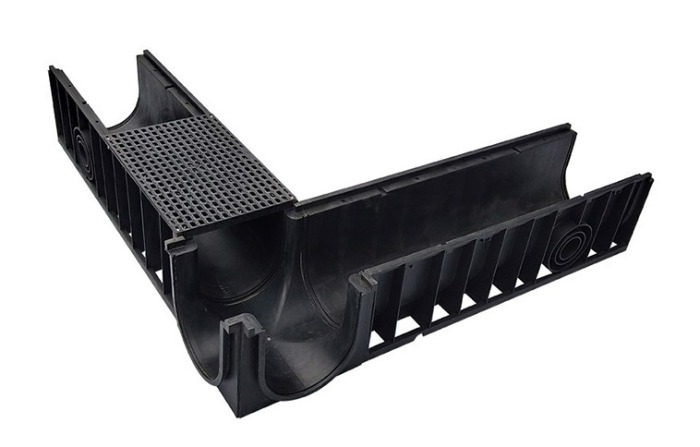V-Shaped HDPE Building Materials Pipe Plastic Drainage Ditch
Cat: Plastic Drain Channel
The V-shaped HDPE building material pipeline plastic drainage trench represents a significant innovation in drainage technology, tailored to meet...
See DetailsWhen installing a Plastic Drainage System, one of the more important components to consider is the Drain Channel Cover. These covers play a crucial role in protecting the drainage system, preventing debris ingress, and ensuring safety in outdoor spaces. However, to keep your drainage system working efficiently, proper maintenance of the Drain Channel Covers is essential.
1. Regular Cleaning of Drain Channel Covers
One of the more important maintenance steps for Drain Channel Covers is regular cleaning. When debris such as leaves, twigs, and dirt accumulate on the cover, it can obstruct the water flow and cause backups. Blocked channels can cause to flooding, structural damage, and even safety issues.
Cleaning Tips:
Inspect and Remove Debris: Use a broom, leaf blower, or small rake to clear the surface of the covers regularly. For stubborn dirt, a mild detergent mixed with warm water can help loosen up the grime.
Lift and Clean the Channels: If the cover is removable, lift it and check for any dirt or sediment inside the channel. Use a hose or pressure washer to clean the channel's interior. Remove any trapped debris or leaves that may obstruct the water flow.

2. Check for Damage or Wear
Drain Channel Covers are constantly exposed to the elements. Whether it's sunlight, rain, or foot/vehicle traffic, these covers can degrade over time. Cracks, chips, or deformation of the cover can compromise its function and safety.
Damage Inspection Tips:
Inspect for Cracks: Examine the cover for any visible cracks, chips, or signs of wear. Cracked covers can pose a safety risk and allow debris to enter the drainage system, causing to potential blockages.
Check for Warping: Plastic Drainage Systems are more likely to warp under prolonged exposure to UV radiation and harsh heat. Make sure the cover is not deformed in a way that could affect its fit or strength.
Examine Load Capacity: For areas with heavy traffic, ensure that the Drain Channel Covers are still capable of handling the weight. If the cover is showing signs of excessive wear, consider replacing it with a more durable option.
If you find any damage during your inspection, it’s better to replace the cover or repair it immediately rather than waiting for bigger issues to arise.
3. UV Protection for Plastic Covers
If your Plastic Drainage System uses polymer covers, UV degradation can be a significant concern. Exposure to direct sunlight can cause plastics to become brittle, weaken, or discolor. This can cause to cracks, reduced strength, and loss of flexibility in the cover.
UV Protection Tips:
Choose UV-resistant Materials: If you're installing new covers, opt for UV-stabilized plastic materials. Many modern plastic covers are treated with UV inhibitors to resist degradation.
Apply UV-protectant Spray: For existing plastic covers, you can apply a UV-protectant coating or spray that helps prevent sun damage. These coatings create a protective layer that shields the cover from harmful UV rays.
Provide Shade or Shelter: If possible, install covers in areas that are shaded or protected from the harshest sun. You can also consider landscaping options like trees or awnings to shield the cover from direct sunlight.
Maintaining the UV resistance of your covers is crucial for ensuring their longevity and keeping the drainage system functioning properly.
It would be great to hear from you!